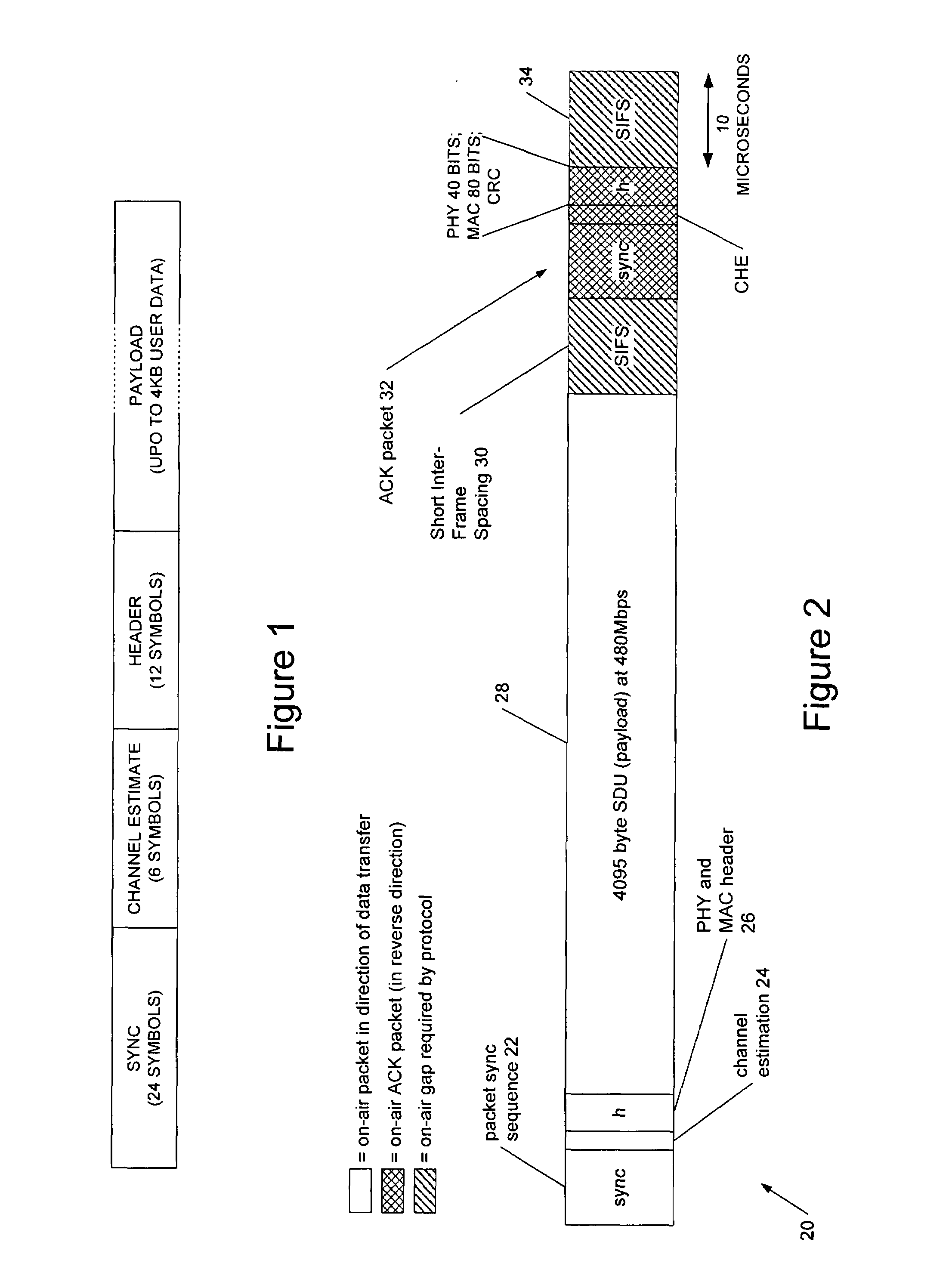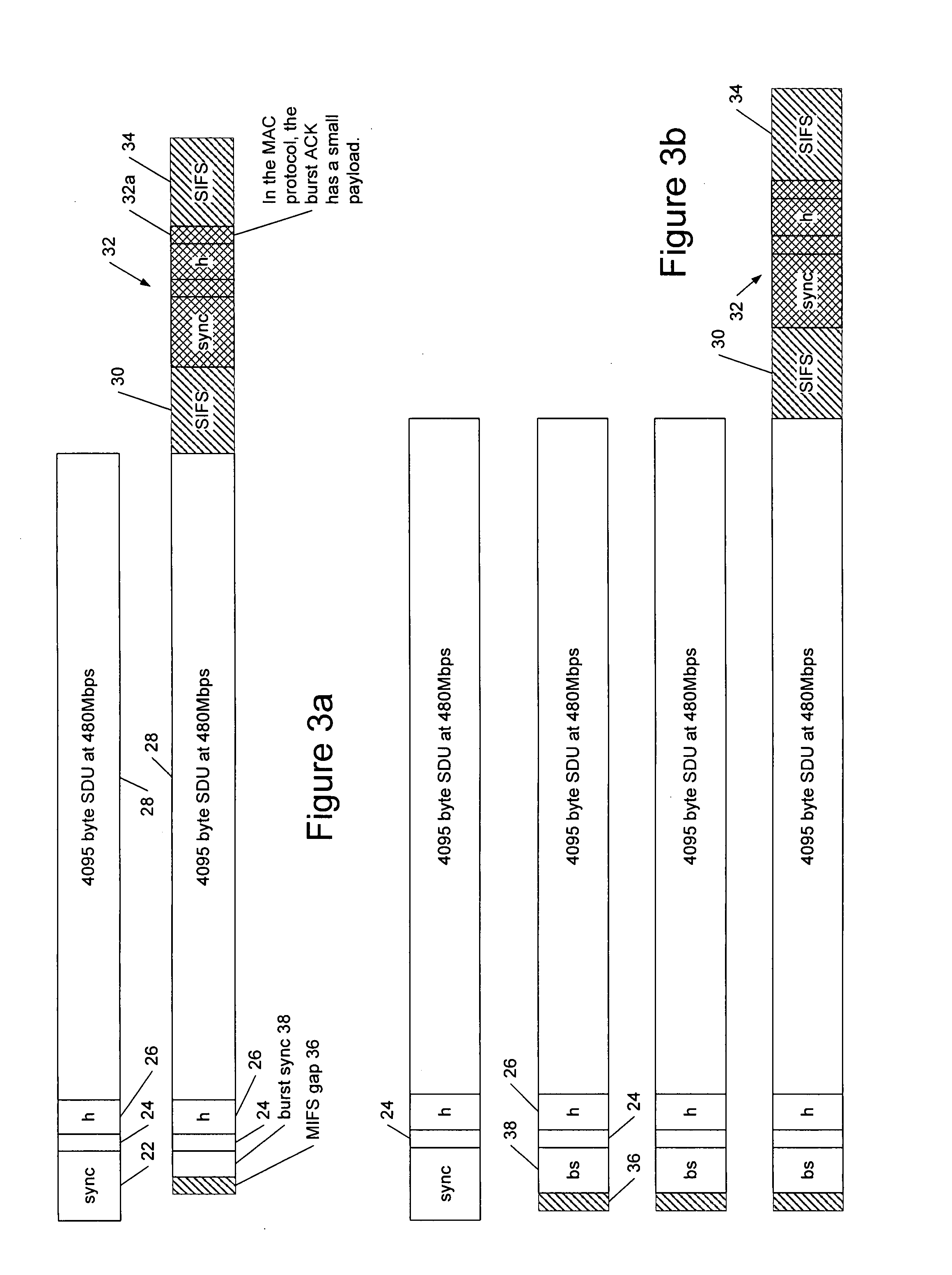Ultra wideband communications systems
a communication system and wideband technology, applied in multi-frequency code systems, digital transmission, duplex signal operation, etc., to achieve the effects of reducing inter-packet delays, reducing turnaround time, and low cos
- Summary
- Abstract
- Description
- Claims
- Application Information
AI Technical Summary
Benefits of technology
Problems solved by technology
Method used
Image
Examples
Embodiment Construction
[0056]Referring now to FIG. 4, this shows, schematically, a burst mode protocol according to an embodiment of the invention, which the inventor refers to as a “dense burst” mode. A burst 400 comprising eight data packets 400a-h is shown and like elements to those previously described are indicated by like reference numerals. Thus it can be seen that the initial packet 400a corresponds to that shown in FIG. 3a but the subsequent protocol differs. More particularly, although there is a MIFS gap 36 after the first data packet, this gap is occupied by acknowledgement data 402 after each subsequent packet of the burst except for the last when the protocol, in one embodiment, concludes similarly to before. The protocol does not, in fact, conclude precisely the same way since the final acknowledgement 404 may either comprise an acknowledgement of the last two packets of the burst (either separately so that an acknowledgement of each of the last two packets can be distinguished, or together...
PUM
 Login to View More
Login to View More Abstract
Description
Claims
Application Information
 Login to View More
Login to View More - R&D
- Intellectual Property
- Life Sciences
- Materials
- Tech Scout
- Unparalleled Data Quality
- Higher Quality Content
- 60% Fewer Hallucinations
Browse by: Latest US Patents, China's latest patents, Technical Efficacy Thesaurus, Application Domain, Technology Topic, Popular Technical Reports.
© 2025 PatSnap. All rights reserved.Legal|Privacy policy|Modern Slavery Act Transparency Statement|Sitemap|About US| Contact US: help@patsnap.com



